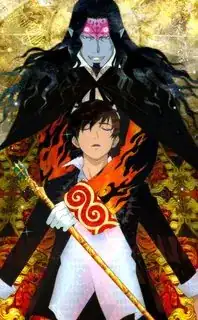According to an interview (in French) with the series creator series creator, Mahiro Maeda, the art style of the anime combines western Impressionism with Ukiyo-e, a 19th century Japanese woodblock printed art style that strongly influenced the Impressionism movement around the same time.
One of the particularly notable mini-movements within impressional is the Art Nouveau style, particularly the influence from the Austrian artist Gustav Klimt, likely best known for his work The Kiss. Klimt was mentioned to be one of Maeda's most favorite artists and his works gave way to inspire the blocks of strong primary colors seen in the series.
Klimt's style applies a tension of naturalism and stylization, bridged together by turns through fairly intricate multiform and multi-patterned surfaces and bold contrasts of color with highlights of gold, silver, coral, and gems. This is all wrapped around a pervasively mystical and alluring aura brought about the the spiraling and intertwining lines juxtaposed with stark square and triangular shapes. All of this is reminiscent of a ghostly mosaic aesthetic.
For more information on the visual style, I recommend picking up the illustration art book on the series Gankutsuou: The Count of Monte Cristo Complete.
